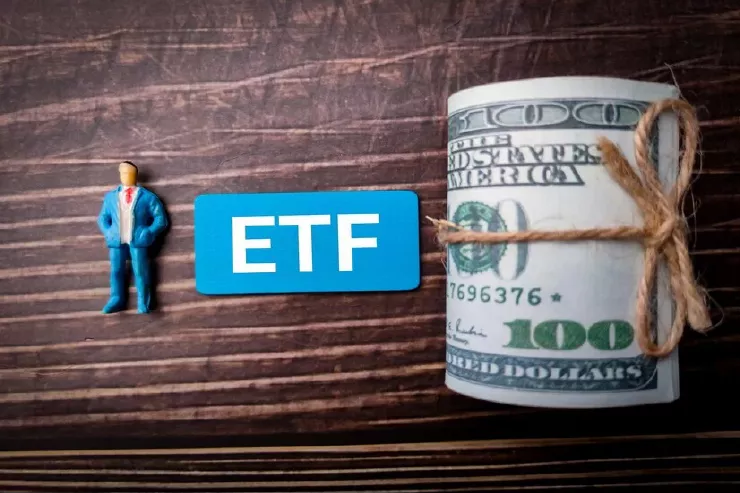
The world of investment is ever-evolving, with Exchange-Traded Funds (ETFs) becoming a popular choice for investors seeking diversification and efficiency. ETFs are baskets of securities that trade on an exchange, similar to stocks, offering a versatile pathway to a wide range of sectors, commodities, and investment strategies. They are known for their low expense ratios, tax efficiency, and ability to provide instant portfolio diversification. This article aims to demystify ETFs, guiding you through the top options available in the market. Whether you’re a seasoned investor or just starting out, understanding the nuances of ETFs can significantly impact your investment journey. So, let’s dive into the world of ETFs and discover how to navigate this dynamic investment tool.
Exchange-traded funds (ETFs) are like baskets containing various types of investments, such as stocks, bonds, or commodities. They are traded on stock exchanges, much like individual stocks, allowing investors to buy and sell shares throughout the trading day. ETFs offer a way to invest in a collection of assets, giving you a slice of a broader market or a specific sector with a single purchase.
ETFs are managed by experts who ensure the fund’s holdings reflect its defined strategy, whether it’s tracking a market index, sector, or other assets. When you invest in an ETF, you’re buying shares in the fund, representing your stake in its overall holdings.
Stock ETFs: These contain a variety of stocks and might track an index like the S&P 500 or focus on a particular industry.
Bond ETFs: These invest in bonds, which are like loans to governments or companies. They pay you back with interest over time.
Commodity ETFs: These invest in physical goods, like oil, gold, or agricultural products.
Industry/Sector ETFs: These focus on a specific part of the economy, like technology, healthcare, or finance.
International ETFs: These give you a piece of markets in different countries, helping you diversify your investments worldwide.
Assessing Your Investment Goals: Think about what you want from your investments. Are you looking for growth, income, or both?
Understanding Fees and Expenses: Every ETF has costs like management fees and trading expenses. Lower fees generally mean more of your money stays invested.
Evaluating Performance History: Check how the ETF has performed in the past, but remember, past performance doesn’t guarantee future success.
Top ETFs by Category: Some ETFs are known for their consistent performance or unique strategies. For example:
ETFs, or Exchange-Traded Funds, are popular with people who want to invest their money. They have some cool features that make them stand out:
Market Risk: All investments can go up and down in value. ETFs are no exception, especially if the whole market drops.
Liquidity Risk: Some ETFs might be hard to sell quickly at a fair price, especially if they’re not very popular or trader AI in a niche market.
Tracking Error: Sometimes an ETF doesn’t perfectly match the performance of the index or sector it’s supposed to track. This difference is known as a tracking error.
In conclusion, ETFs offer a compelling avenue for investors looking to diversify their portfolios, access various sectors, and manage risks efficiently. With an understanding of the different types of ETFs and how to choose the right one, you can make informed decisions that align with your financial goals. While ETFs present an attractive investment option, it’s crucial to consider the associated risks and conduct thorough research before diving in. Remember, a well-informed investor is an empowered one. As you continue on your investment journey, consider ETFs as a tool to potentially enhance your portfolio and help achieve your financial aspirations.
高リスクの警告: FX、CFD、暗号通貨の取引または取引は非常に投機的であり、無視できないレベルのリスクを伴うため、すべての投資家に適しているわけではありません。投資した資本の一部またはすべてを失う可能性があるため、失うわけにはいかない資本を使って投機すべきではありません。以下のリスク開示を参照してください。 traderai.ai は、お客様の活動に基づいて利益を得る、または失うことはなく、サービス会社として運営されます。 traderai.ai は金融サービス会社ではないため、財務上のアドバイスを提供する資格はありません。 traderai.ai は、この情報ウェブサイトを介して、またはこれに関連して発生した損失については責任を負いません。
サイトのリスク開示: traderai.ai は、この Web サイトに含まれる情報に依存した結果生じる損失または損害に対して一切の責任を負いません。これには、教育資料、価格相場とチャート、分析が含まれます。金融市場の取引に伴うリスクを認識し、専門家のアドバイスを求めてください。失うリスクを超える金額を決して投資しないでください。 FX、CFD、暗号通貨に伴うリスクは、すべての投資家に適しているわけではありません。 traderai.ai は、このサイトでホストされているデータの使用またはデータからの推論の結果としてお客様が直面する可能性のある取引損失について責任を負いません。
法的制限: 上記の規定を制限することなく、金融活動に関する法律は世界中で異なることを理解し、本サイトの使用に関して居住国の法律、規制、またはガイドラインを適切に遵守することはお客様の責任となります。疑念を避けるために、当社のサイトにアクセスできることは、当社のサービスおよび/またはサイトを通じたお客様の活動が、お客様の居住国に関連する法律、規制、または指令に基づいて合法であることを必ずしも意味するものではありません。法的に免除されていない限り、米国の個人に商品オプションの売買を勧誘することは、それが「予測」契約と呼ばれるものであっても、取引用に上場され、CFTC 登録取引所で取引されている場合を除き、法律違反となります。英国金融行動監視機構は、暗号資産のCFDの販売、宣伝、配布を禁止する政策声明PS20/10を発行しました。これは、英国居住者を対象とした CFD や暗号通貨に基づくその他の金融商品の配布に関するマーケティング資料の配布を禁止しています。 MiFID II 金融商品に関連する取引サービスの提供は、該当する当局および/または規制当局によって許可またはライセンスされている場合を除き、EU では禁止されています。ユーザーが広告主のウェブサイト経由で当社のパートナー広告主にアカウントを開設することを選択した場合、当社は広告料を受け取る場合があることにご注意ください。この Web サイトを訪問する際のエクスペリエンスを向上させるために、当社はお客様のコンピュータに Cookie を配置しました。コンピューターの Cookie 設定はいつでも変更できます。この Web サイトを使用すると、この Web サイトに同意したことになります。